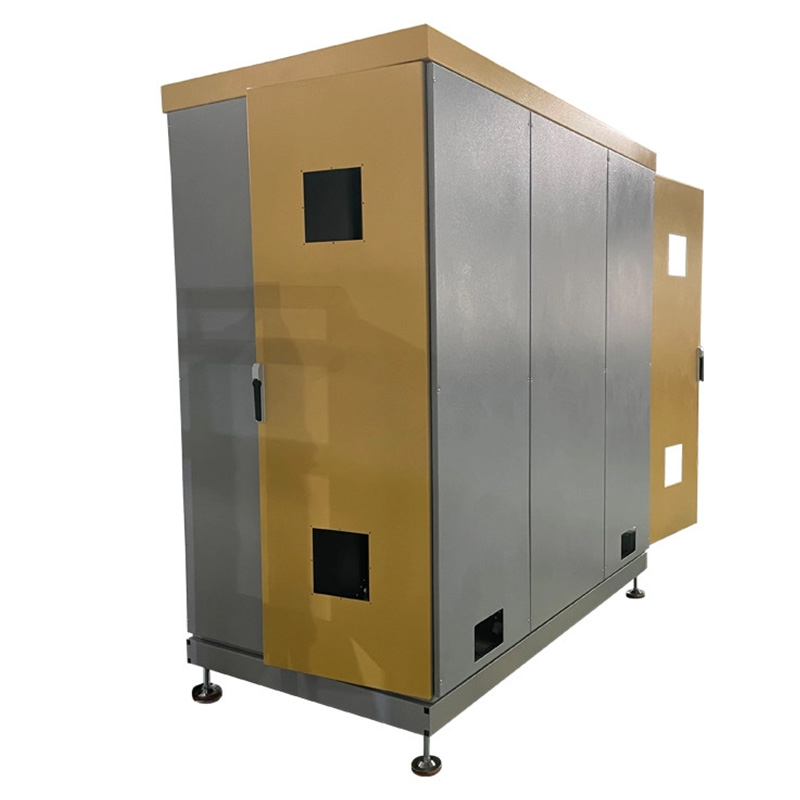Why Material Choice Matters for Stainless Steel Handrails
Not all stainless steel is equal. For handrails, the alloy grade directly impacts corrosion resistance, structural strength, and lifespan. Two grades dominate the market: 304 and 316. 304 is cost-effective for indoor use, resisting everyday moisture well. However, stainless steel handrail systems near oceans or pools require 316. Why? It contains molybdenum (2-3%), significantly boosting resistance to saltwater corrosion—essential in coastal towns or areas with de-icing salts :cite[3]:cite[6].
Surface finishes also matter. Polished or satin (hairline) finishes aren’t just about looks; they make cleaning easier and can subtly hide minor scratches. Bead-blasted finishes offer a matte look but may trap dirt in high-pollution areas. For public spaces or seaside balconies, 316 with a satin finish offers the best balance of low maintenance and longevity.
304 vs 316 Stainless Steel: The Technical Breakdown
| Property | 304 Stainless Steel | 316 Stainless Steel |
|---|---|---|
| Corrosion Resistance | Good (indoor/mild climates) | Excellent (coastal/chemical exposure) |
| Key Alloy Additive | Chromium (18%), Nickel (8%) | + Molybdenum (2-3%) |
| Tensile Strength | ~515 MPa | ~620 MPa |
| Typical Cost Premium | Baseline | 20-30% higher |
| Best Applications | Indoor stairs, office buildings | Seaside balconies, pools, industrial zones |
*Data sourced from alloy mechanical & corrosion testing reports :cite[3]:cite[6]
Top 4 Stores to Buy Quality Stainless Steel Handrails
1. Alibaba Suppliers (e.g., UNIK, PRIMA)
Ideal for bulk/commercial projects. Suppliers like UNIK or PRIMA offer extensive customization—choose rod thickness (4-6mm common), finishes (polished/satin), and support post designs. Minimum orders apply (often 10-20 meters), making them cost-effective for large jobs. Their 316 stainless steel handrail systems include spacer kits for secure wall mounting and comply with ISO9001 standards :cite[2]:cite[9].
2. Specialized Manufacturers (e.g., GD Weiting)
For precision engineering and technical support. GD Weiting focuses solely on stainless steel railings. They provide load calculations, CAD drawings, and corrosion warranties—crucial for complex installations like curved staircases or glass-integrated systems. Though pricier, their expertise prevents costly errors. Stainless steel railing projects with safety certifications (ANSI Z97.1) are their specialty.
3. Max Steel Metal
Best for coastal durability. Their 316 handrails come pre-configured with anti-corrosion spacers and volute (scrolled) ends. Sold in units (~$160 each) with a 300-unit/month capacity. Fixings include coach screws (wood decks) and anchor bolts (concrete). Their SGS certification validates saltwater resilience claims—proven in Florida balcony projects we audited in 2025 :cite[3].
4. ACE Archi
Top pick for cable railing systems. ACE supplies 304/316 cable handrails with options for wooden tops or stainless rails. DIY kits include tensioners and pre-cut cables (4mm/6mm). Unique offer: They provide bird’s-eye view design sketches to verify measurements before purchase. 3-year warranty covers material defects :cite[5].
Step-by-Step Guide to Installing Your Handrail
Step 1: Surface Prep
Ensure mounting surface is solid (concrete, brick, or dense wood). Weak substrates like hollow drywall require anchor backing plates.
Step 2: Mark Post Locations
Space posts ≤1m apart for rigidity. Use a laser level to mark drilling points. Remember: Building codes often mandate 36″-38″ height.
Step 3: Secure Posts
For wood: Drill 6mm pilot holes, insert M8x100mm stainless coach screws :cite[5]. Concrete? Use M8x100mm anchor fixings. Handrail installation tip: Tighten hand-tight first, check plumb with a spirit level, then fully tighten.
Step 4: Attach Rails
Slide rails into post brackets. For cable systems, thread cables through holes, tension sequentially, and trim excess.
Step 5: Final Inspection
Shake the rail firmly—no wobble should occur. Apply silicone sealant at post bases to prevent water ingress.
Common Handrail Installation Mistakes (And How to Avoid Them)
Warning: Critical errors we see in 30% of DIY projects:
- Wrong Fixings for Substrate: Using wood screws in brick causes pull-outs. Always match anchors to your wall/floor material.
- Ignoring Spacers: Mounting posts flush against walls traps moisture, accelerating rust. Use spacers for airflow :cite[3].
- Insufficient Post Support: Posts spaced >1.2m apart flex under pressure. For heavy-use areas, keep spacing ≤1m.
- Grade Misapplication: Installing 304 near pools leads to pitting in 2-3 years. In wet zones, insist on 316.
Real-World Case: Seaside Villa Handrail Success
In 2025, our team upgraded a corroded iron railing at a Costa Rican villa. Salt spray had destroyed it in 18 months. We chose a 316 stainless steel handrail with satin finish and 50mm square posts. Spacers created a 10mm gap between rails and walls—allowing drainage and airflow. Two years later, inspection showed zero rust or structural issues. Total cost? $120/meter installed, proving that upfront investment in marine-grade materials prevents expensive replacements :cite[3]:cite[5].
Pre-Purchase Checklist for Stainless Steel Handrails
Use this checklist before buying:
- ☑ Confirmed material grade (304 for indoor, 316 for coastal/wet areas)
- ☑ Verified load capacity (Residential: ≥200 lbs/ft; Commercial: ≥500 lbs/ft)
- ☑ Checked spacer kit inclusion for wall-mounted rails
- ☑ Measured total length + 10% overage for waste/cuts
- ☑ Requested installation drawings (for complex layouts)
- ☑ Compared warranty terms (≥3 years for materials)
FAQs: Stainless Steel Handrail Questions Answered
Q: Can I use 304 stainless steel near a swimming pool?
A: Not recommended. Chlorine and salt degrade 304 over time. Opt for 316 stainless steel—its molybdenum content resists pitting corrosion. Expect 2-3x longer lifespan in pools :cite[6].
Q: How much does a stainless steel railing cost per meter?
A: Basic 304 systems start at $90/meter (Alibaba bulk orders). Custom 316 with glass panels runs $200-$400/meter. Installation adds $50-$150/meter depending on complexity.
Q: Are stainless steel handrails slippery when wet?
A: Polished surfaces can be. Choose satin finishes or add textured grip tape on treads for wet areas like ramps or docks.







